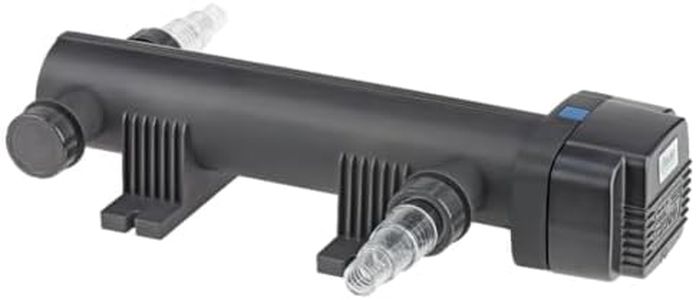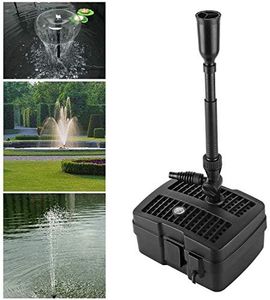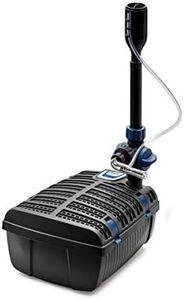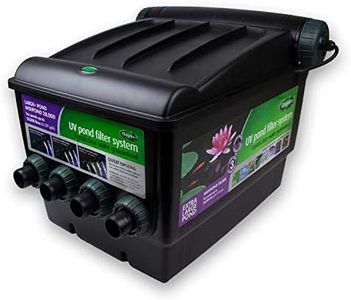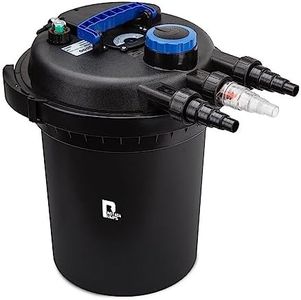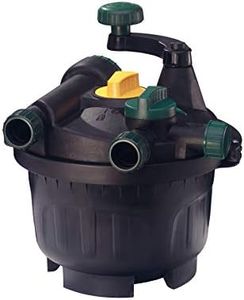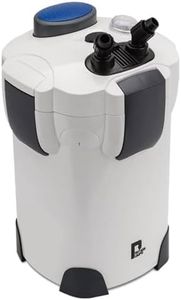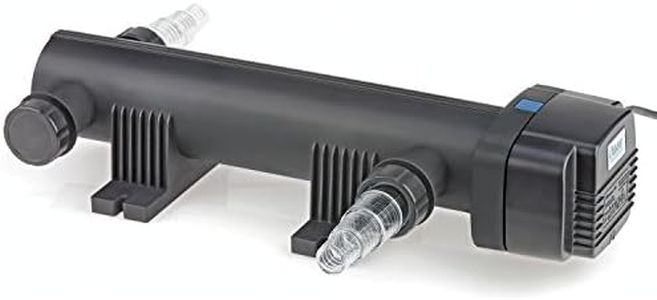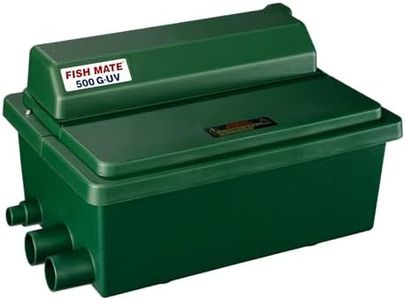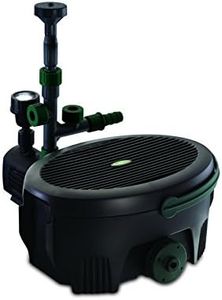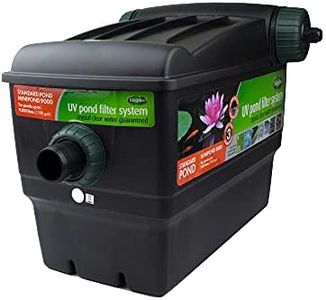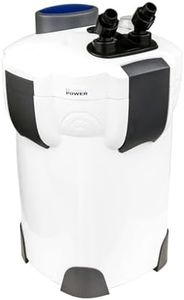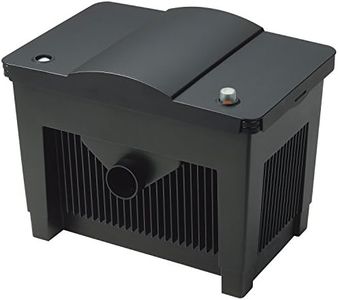We Use CookiesWe use cookies to enhance the security, performance,
functionality and for analytical and promotional activities. By continuing to browse this site you
are agreeing to our privacy policy
10 Best Uv Pond Filters
From leading brands and best sellers available on the web.Buying Guide for the Best Uv Pond Filters
Choosing the right UV pond filter is all about ensuring your pond stays clear, healthy, and free of green water caused by algae blooms. UV pond filters use ultraviolet light to neutralize algae as water passes through, helping to maintain a cleaner environment for fish and plants. Picking the best UV pond filter depends on the size of your pond, the number of fish, and how clear you want your water to be. It's important to match your UV filter to your pond’s specific needs, as an overly strong or weak filter could be less effective.UV WattageUV wattage refers to the amount of power the ultraviolet lamp inside the filter uses. A higher wattage means stronger UV light, which can treat larger volumes of water or handle higher algae loads. UV filters usually range from about 5 to 55 watts. For small ponds, a lower wattage in the 5-15 watt range is often enough. Medium ponds may require 16-30 watts. Large ponds or those with heavy fish populations may need 30 watts or more. When choosing, consider both the size of your pond and its exposure to sunlight; more sun or more fish often means higher wattage is better.
Maximum Pond Size (Capacity)Maximum pond size indicates the largest volume of water the filter can effectively treat, typically measured in gallons or liters. This is a critical spec because using an undersized filter means the UV light can’t treat all the water quickly enough, while an oversized filter may not be cost-effective. Manufacturers give a recommended pond size, and you should always measure your pond to compare. If your pond has lots of fish or gets direct sunlight, pick a filter rated for a slightly larger pond to get better results.
Flow RateFlow rate is how much water passes through the filter per hour, often stated as gallons per hour (GPH) or liters per hour (LPH). The right flow rate ensures water moves slowly enough for the UV light to work but fast enough to cycle all the pond's water in a few hours. Low flow (up to 500 GPH) is suitable for small ponds, medium (500-1500 GPH) for midsize ponds, and high flow (1500 GPH and above) for large ponds. If you want the clearest water, make sure the filter can handle moving all your pond water through it at least once every 1-2 hours.
Lamp Replacement and MaintenanceThe ease of lamp replacement and general maintenance impacts how much work you’ll need to do to keep your filter running well. UV lamps lose effectiveness over time and typically need to be replaced every year, so it’s important to pick a model where changing the lamp is straightforward. Look for filters with clear maintenance instructions, and consider whether they include indicators for lamp replacement. If you prefer low maintenance, choose a design that’s easy to access and clean.
Installation TypeUV pond filters come in-line (integrated into existing pond plumbing) or standalone (all-in-one units with their own pump and filter). In-line types are good if you want to combine with an existing filter and pump, while standalone units are simpler for beginners or those setting up new ponds. Consider your current pond setup and whether you are comfortable with plumbing; standalone models are easier if you don’t have existing equipment.
